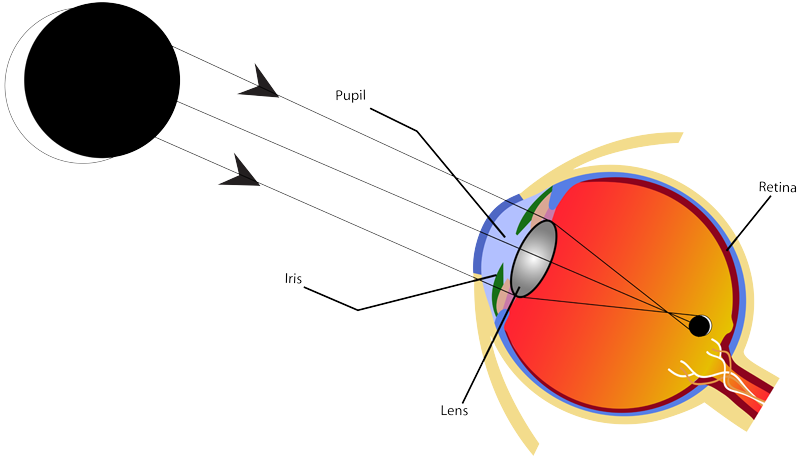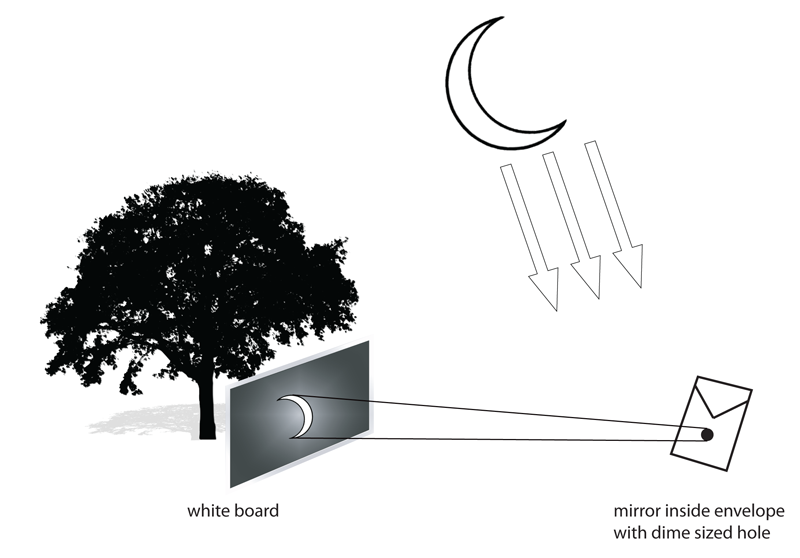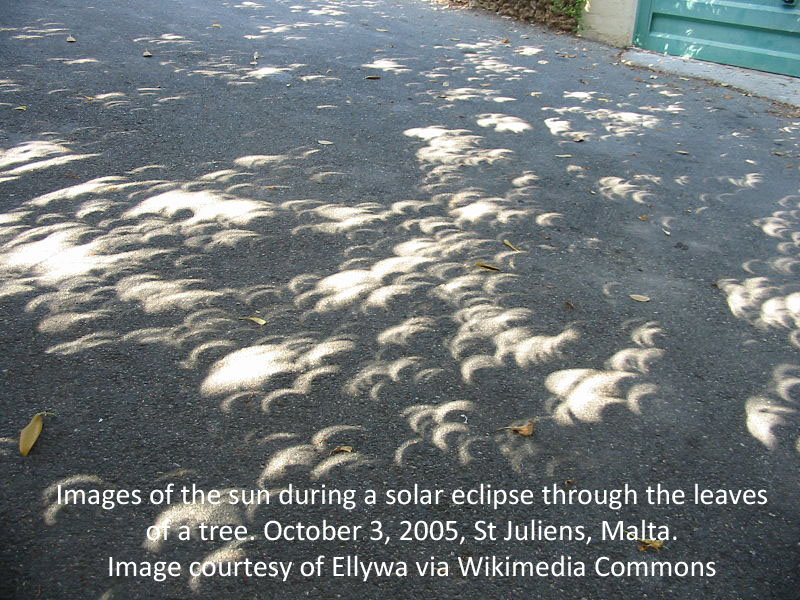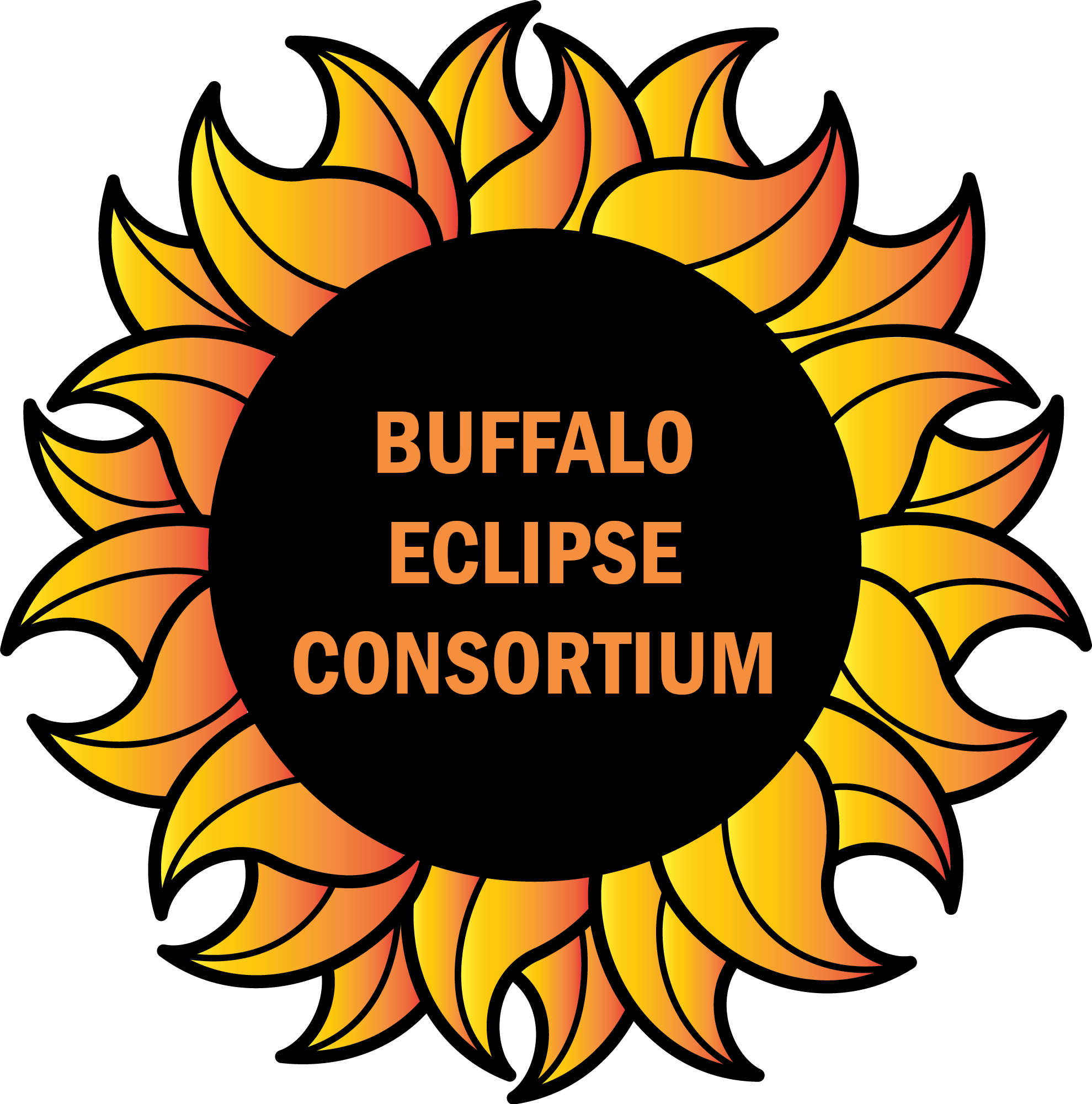How NOT to view the eclipse:
- Directly
- Through the clouds
- Through mylar used for balloons, “space blankets” or anything not made specifically for solar eclipse viewing by an established, reputable supplier
- Through eyepiece “sun filters” included with some small telescopes
- Though ANY telescope or binoculars without a specially made solar filter
Why is direct viewing of a partial eclipse so DANGEROUS to my eyes?
Have you ever tried to look directly at the sun? I hope not, but you may have accidentally glanced at it and noticed that IT HURTS! The iris of your eye is a muscle. When the sun is directly in view, it closes down by contracting as much as it can to protect your retina. Just like any other muscle, it hurts when it contracts as hard as possible. During a partial eclipse, less of the sun’s yellow disk is exposed. That means that your natural defense mechanism of iris contraction is weaker, making it easier to look at it directly. Don’t do it! If ANY PART of the yellow disk is exposed, it can burn your retina possibly resulting in permanent damage and loss of sight. The only time you can look directly is during totality which will last less than four minutes during this eclipse.

How to SAFELY view the eclipse:
- Through solar eclipse viewers made by established, reputable suppliers. Be sure that glasses state that they meet the ISO standard for safe solar observation!
- Through #14 welders glass
- Through a telescope ONLY with a full-aperture solar filter made by an established, reputable supplier. Be sure to cover or remove any finder scope to prevent accidents. Don’t have a telescope and filter? Visit one of the viewing sites listed on the locations page!
- Projection with binoculars or a telescope (be careful!!) – see https://eclipse.aas.org/eye-safety/projection
- The Miller Mirror Projection Technique: Cover a mirror with paper or an envelope that has a dime sized hole in it. The sun’s image can be projected in to a dark area or dark room. That projected image will be large enough and dim enough for pleasant and safe viewing. Don’t look at the mirror; look at the projected image.

- Pinhole Projection: a classic technique that works, but makes a very small image that is not particularly good for viewing. Read more on NASA’s pinhole camera website. You can find instructions for a cereal box viewer at http://hilaroad.com/camp/projects/eclipse_viewer/eclipse_viewer.html or a triangular shipping box viewer at www.exploratorium.edu/eclipse/how.html
- Pinhole projection through the leaves of a tree: Look around at the ground during the eclipse and see how many tiny images of the eclipsed sun you can find!

Counterfeit Glasses
There are reports of counterfeit eclipse glasses. If you aren’t sure that the set you have are genuine and safe, read this information from the American Astronomical Society: https://eclipse.aas.org/eye-safety/iso-certification
